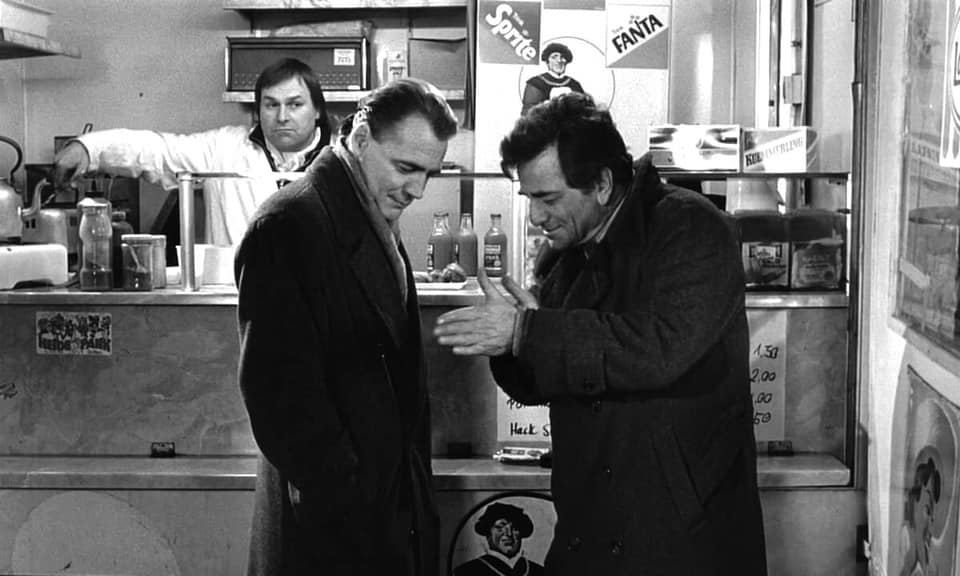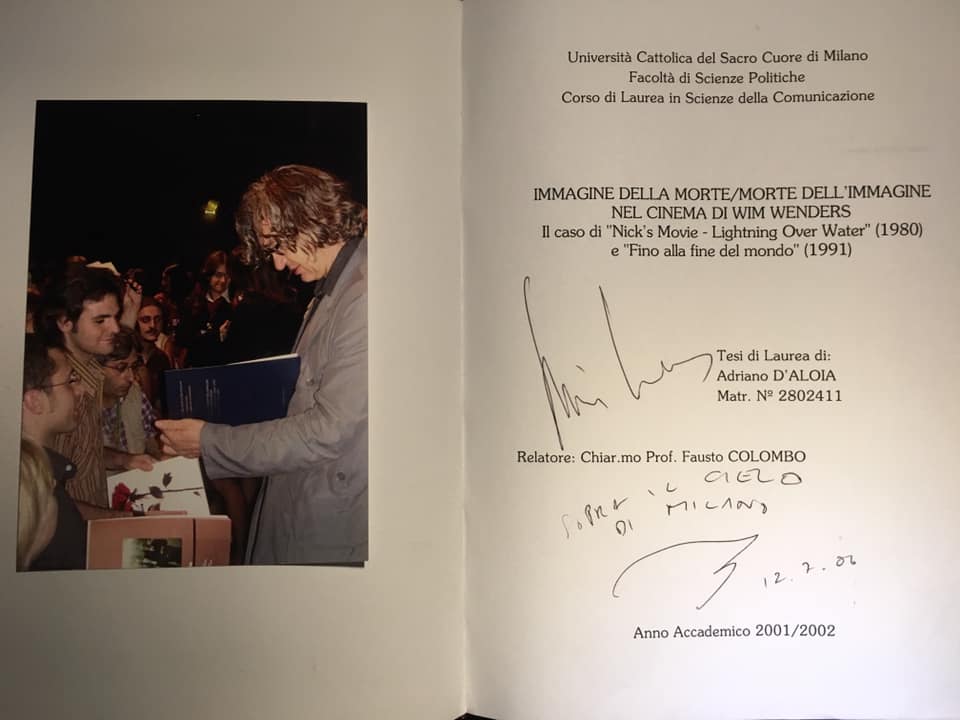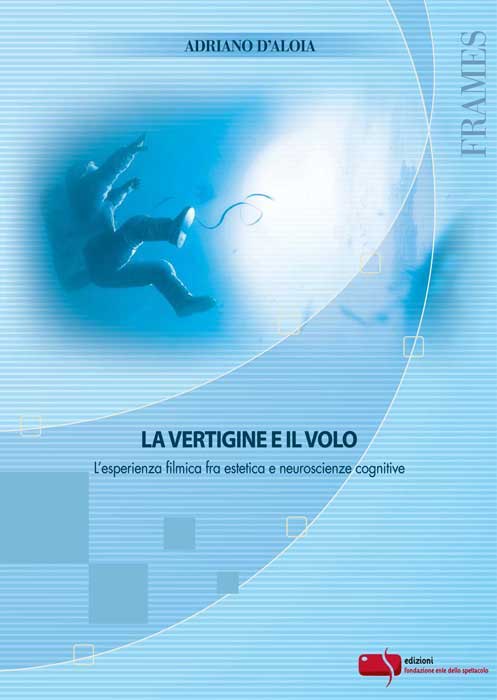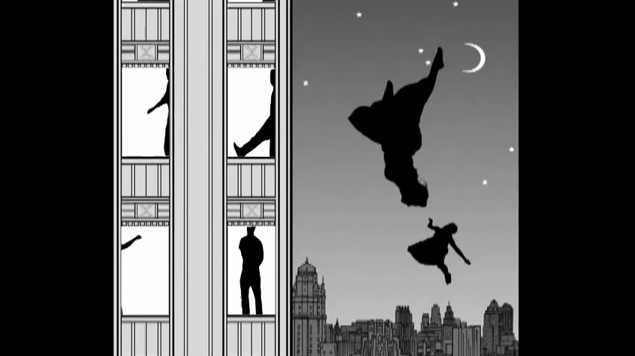Le mani e le ali

Uno dei miei gesti preferiti, nella storia del cinema e in tutte le mattine d’inverno. E il mio piccolo pezzo d’ala, un feticcio. (Vedi che a rinunciare alle ali alla fine ci si lasciano le penne…). Per Bruno Ganz.


Uno dei miei gesti preferiti, nella storia del cinema e in tutte le mattine d’inverno. E il mio piccolo pezzo d’ala, un feticcio. (Vedi che a rinunciare alle ali alla fine ci si lasciano le penne…). Per Bruno Ganz.



Dalla camminata in precario equilibrio di un funambolo alla passeggiata spaziale di un astronauta sospeso nello spazio siderale, questo libro offre un vertiginoso percorso nelle forme con cui il cinema contemporaneo continua a coinvolgere lo spettatore intensificando le sue percezioni e le sue emozioni. Per la prima volta nell’ambito degli studi sull’esperienza filmica, il paradigma della cognizione incorporata e il concetto di simulazione incarnata vengono adottati per descrivere la relazione dello spettatore con i personaggi e con i mondi della finzione cinematografica, in un serrato dialogo fra teorie del cinema, estetica e neuroscienze cognitive. Acrobazia, caduta, impatto, capovolgimento, deriva sono le cinque tappe di questa esplorazione, quasi un unico movimento che si origina nella capacità del film di stimolare la corporeità dello spettatore e precipita verso il senso più profondo e umano dell’atto di partecipare empaticamente alle vicende del personaggio.
La vertigine e il volo. L’esperienza …

I am attending The NECS 2013 Conference on “Media Politics ‒ Political Media” at Charles University, Prague. My paper – The impact factor. Politics of cinematic representability of violent events – describes the ways in which the film spectator experiences physically and psychically the cinematic representation of falling human bodies in mainstream films, with particular regard to the culmination of this movement: the impact with the ground. Contemporary cinema, in fact, uses an invariable and cross-genre aesthetic politics: the impact is not explicitly shown on screen because of both its psycho-physiological violence and its controversial socio-political implications, especially in the post-11/9 era. As the series of examples that I analyse demonstrates, cinema employs a series of stylistic strategies – ‘replacement’, ‘obscuration’, ‘diversion’, ‘interposition’ – intended to represent the unrepresentable (Baudrillard, Didi-Huberman). To explain how these strategies operate and to evaluate their relevance in the theoretical paradigm of film-embodiment …

My essay On Icarus’ Wings. The Cinematic Experience of Falling Bodies has been published in issue 4 of Czech journal Iluminace – The Journal of Film Theory, History and Aesthetics. The essay describes the ways in which the film spectator experiences physically and psychically the cinematic representation of falling human bodies, with particular regard to the culmination of this movement: the impact. The latter is usually not shown on screen because of its psycho-physiological ‘violence’. Cinema employs a series of stylistic strategies – ‘replacement’, ‘obscuration’, ‘diversion’, ‘interposition’ intended to represent the unrepresentable. To explain how these strategies operate, I draw upon both recent neurocognitive experiments and classic experimental psychology demonstrations on visual occlusion and evaluate their implications for film aesthetics. The essay concludes with a brief analysis of a short film on 9/11 by A. G. Iñàrritu in order to illuminate the bond forged between the aforementioned strategies …

Here is an excerpt from my essay on the cinematic experience of falling bodies on which I’m working on for publication in an international film studies journal.
The case of Alejandro Gonzalez Iñàrritu’s short film in the collective work 11’09’’01 – September 11 (Canada 2002) is extremely interesting, since the impact with the ground of the falling bodies is not represented at all and since the black screen is used to partially obscure the movement that precedes the impact, which is, therefore, only evoked as the dramatic and inevitable ending of the falls. The black screen represents a darkening of both the visual field and consciousness. The sight at a distance of desperate, defenceless falling bodies is immediately and emphatically experienced by the spectator because of the precarious nature of its representability. The unwatchable, the unbearable, the unrepresentable is embodied in the ‘blind’ gaze offered by the black screen. …

Working hard on a paper on the querelle between Theodor Lipps and Edith Stein on the relationship between the acrobat and the spectator…
Suddenly, in the core of Edith Stein’s Zum Problem der Einfühlung (1917), the figures of both the acrobat and the spectator crop out. The young phenomenologist is discussing Theodor Lipps’s notion of Einfühlung and “internal imitation” [Nachahmungtheorie] in her doctoral dissertation: Einfühlung is a kind of act in which one “gets” the Other’s Erlebniss on the basis of psycho-physical and spiritual analogy. In his Grundlegung der Aesthetik, Lipps states that when the spectator is watching an acrobat walking on a suspended wire, he or she feels him/herself so inside the acrobat [ich fühle mich so in ihm] (1903), that his/her conscious self has sunk itself completely into that of the acrobat. On the contrary, Stein argues that Einfühlung is far from being a mere projective…

Oggi m’imbatto per caso in questo video di Scott Snibbe e Annie Loui:
“Falling Girl is an immersive interactive narrative installation that allows the viewer to participate in the story of a young girl falling from a skyscraper. During her miraculously slow descent, the girl reacts to the people and events in each window. Daylight fades, night falls and passes, and at dawn, when the falling girl finally lands on the sidewalk, she is an aged woman who bears no resemblance to the young girl who started her fall a few minutes before.
Cameras situated in the room and connected to computer incorporate images of viewers themselves that appear in the apartments that the falling girl passes. These are juxtaposed with the ever present central image of the girl in silhouette falling slowly along the skyscraper’s side as she gets older and older. In this way, viewers participate in this …

My hypothesis is that along the history of images a series of specific and recurrent “experiential figures” have arisen that have proved to be a functional way to set up the psychological relation between images and observers. In order to study the perceptual-emotional-cognitive relationship between the spectator and the images, we can take into account the fall of human body since it is particularly interesting for its philosophical significance and its capability to engage a corporeal relation with the spectator. I wonder if a good way of studying the nature of this double corpor(e)ality – the representational and the spectatorial one – should be investigating its historical origin, that is its genealogy in the history of visual culture. In the history of art, the genealogy of the figure of fall probably starts with the visual representation of the fall of Lucifero (the fallen angel) and Icaro (the fallen God).
La …

While my clip shows only the final part of the fall (proving that the fatal impact is a censored circumstance – at least in Western culture), this poetic found-footage video by Oliver Pietsch, entitled Maybe Not, will provide you with a “full-fall” experience:
Can you identify the films from which these scenes are cutted out? Do you know any other movie that shows a falling bodies?
[Many thanks to Michael Goddard to have signalled me the video].…

In the latest months I have been trying to figure out how cinema represents the falling of human bodies. My idea is that the representation of fall leads to a peculiar kind of relation between images and spectators. On the basis of neural specularity (mirror neurons), we are able to directly feel an empathetic relation with falling bodies, as if we were those very bodies that are falling. The spectator’s corporality is involed in viewing of such images. But how? – that’s the question. Probably the spectator is involved in a wide range of engagements, concerning perceptual, cognitive and emotional patterns. Just to give you an overlook on the topic, I edited this short (and funny) video:
In questi mesi sto cercando di studiare quali sono le modalità con cui il cinema rappresenta la caduta del corpo umano. La mia ipotesi è che la rappresentazione della caduta porti …